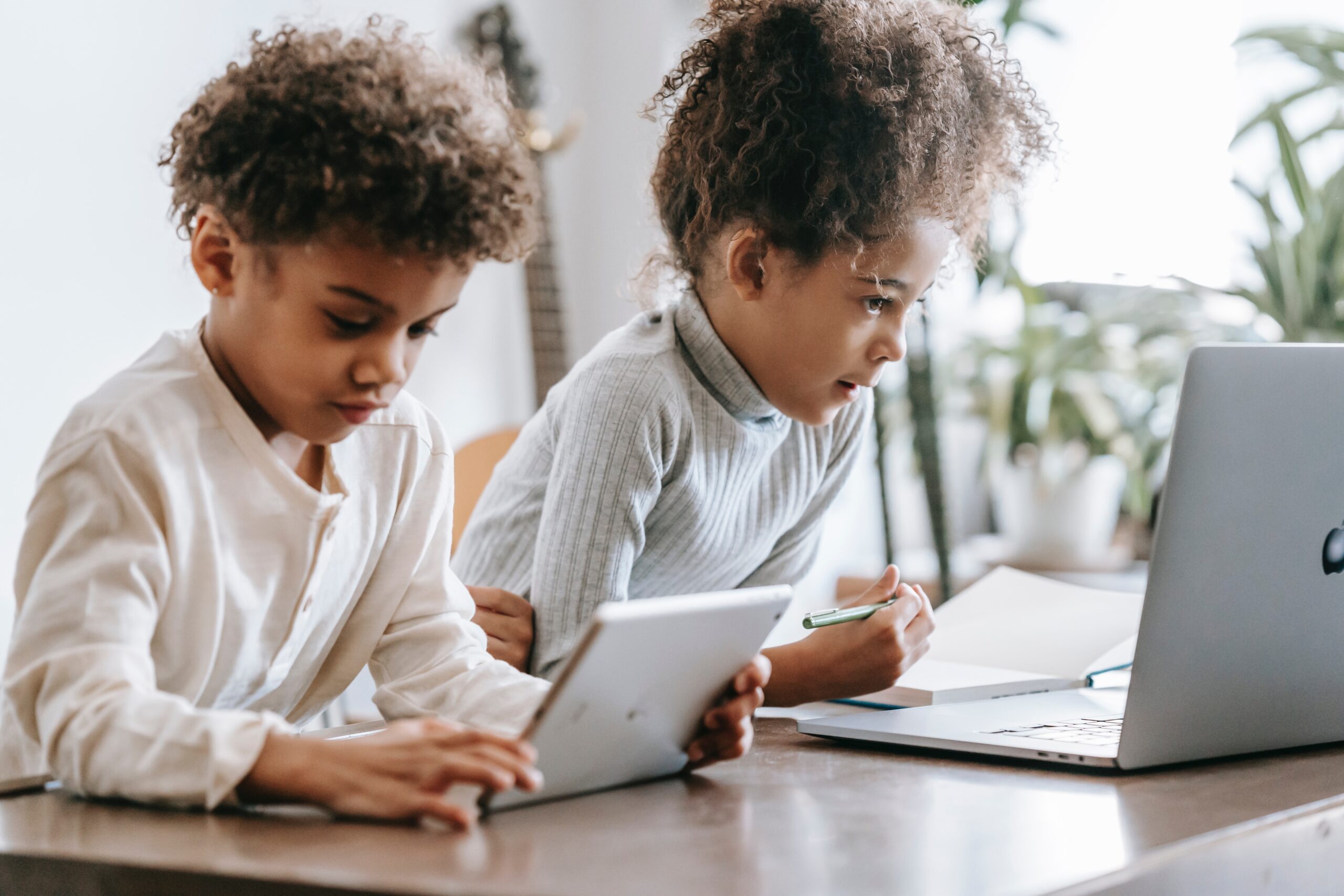The guidelines for online safety rules every parent should know are more important than ever in today’s ever-changing digital environment. Screens are as much a part of our children’s world as playgrounds once were for us. As they navigate this complex network of information, entertainment, and social contacts, we must ensure they receive the correct information and safety precautions. To provide a safe and successful journey in the online world, this thorough guide delves deeply into the crucial rules, advice, and conversations parents should have with their young digital adventurers.
Table of Contents
1. Understand the Platforms
Parents need to be aware of the platforms their children are accessing as our world continues to embrace the digital age. You can make sure your children use these digital venues safely by learning more about them.
Social Media Sites
Today’s social media landscape is vast, with sites like Facebook, Instagram, TikTok, and Twitter, to name a few. Most of these networks adhere to the Children’s Online Privacy Protection Act (COPPA), which mandates that users be at least 13 years old. Children frequently join, nevertheless, by lying about their birth year, even though it is against the rules. Parents must be aware of the platforms their children are utilizing and any applicable age limitations.

Gaming Platforms
Nowadays, several gaming platforms, including Fortnite, Roblox, and Minecraft, offer social activities in addition to playing. Players can communicate, do business, and work together in real-time on these platforms. This encourages collaboration and innovation, but it also exposes people to risks. Children might be approached by strangers or exposed to unsuitable material. Additionally, some players could participate in online bullying. Parents must be aware of these platforms and implement the proper parental controls. Encourage your kids to report any questionable behavior and follow the internet safety guidelines that all parents should know.
Chat and Messaging Apps
Real-time communication has advanced thanks to chat and messaging apps like WhatsApp, Snapchat, and Telegram. Users can exchange texts, pictures, videos, and their whereabouts on these platforms. Although they give kids a way to connect with their pals, they could also be dangerous. End-to-end encryption is a feature offered by several of these apps, which ensures that only the sender and recipient can see the contents of messages. While it offers seclusion, it might be difficult for parents to monitor their children. Make sure your child is aware of the dangers of revealing personal information and that they are familiar with the platform’s privacy settings.
Remember that while your child uses these networks, honest communication is vital. Ensure they know the precautions for online safety that all parents should know. Together, we should discuss the risks and establish boundaries. Prioritize their security and welfare at all times in the online world.
2. Protecting Personal Information
One of the most important lessons kids must learn as they develop in an increasingly digital environment is securing their data. Because there are so many ways that personal information can be misused, from identity theft to online stalking, parents must teach their kids the laws of online safety.
The Dangers of Oversharing:
Particularly in the early adolescent years, parents may press their kids to broadcast every aspect of their lives online. This ostensibly harmless information, such as the name of their school or favorite hangouts, might be put together by ill-intentioned people to create a profile of your child. Oversharing might put you in danger of identity theft, unwanted attention, and cyberstalking. Parents must teach children the potential repercussions of giving out too much online.
Privacy Settings:
Understanding and setting up privacy settings on platforms your child uses is one of the first steps in protecting personal data. These options frequently determine who may view their posts, location, and personal information. Encourage your child to make their profiles “private,” to restrict the available data to outsiders, and to check these settings frequently. Remember that platforms often update their rules and capabilities, so you should check in frequently.
Teach Kids About Personal Boundaries:
Children should learn about personal boundaries online, like in the real world. They should be aware that sharing private information like home addresses, phone numbers, and even the name of their school is risky. Compare the necessity of maintaining these boundaries to avoiding chatting with strangers or disclosing personal information without parental consent.
Every parent should be aware that keeping personal information safe online is a primary priority. It is a continuous discussion that changes as technology and social media platforms do. You can ensure your child has the knowledge necessary to protect their digital identity by staying informed and keeping lines of communication open with them.
3. Recognizing and Reporting Cyberbullying
One of the most critical problems kids today face online is cyberbullying. In contrast to conventional bullying, it can continue after they leave school or their community and follow them wherever they go because of digital technology. Online safety depends on parents being aware of and responding to cyberbullying.
Signs of Cyberbullying
Cyberbullying can appear in various ways and isn’t always obvious, especially when kids are reluctant to talk about online encounters. Here are a few typical common signs:
- Behavioral Changes: Your child might become withdrawn, show signs of anxiety, or lose interest in favorite activities.
- Unease Around Devices: They might appear nervous when receiving notifications or be hesitant to use their devices in front of you.
- Avoidance of School or Social Events: A sudden disinterest in attending school or social gatherings might indicate issues with peers online.
- Unexplained Mood Swings: Look out for signs of depression, aggression, or bouts of crying.

Prevention and Response
The first step in stopping cyberbullying is education. Have a conversation with your youngster about the value of polite online behavior. Stress the importance of treating others how you want to be treated, both offline and online. Talk to them about the possible repercussions of their online behavior and educate them on the lifelong impacts of bullying.
If you believe your child is a victim of cyberbullying:
- Open Dialogue: Start with a non-judgmental conversation, ensuring they know you’re there to support, not punish them.
- Document Evidence: Save screenshots of any harmful messages or posts. They might be needed if the situation escalates.
- Report: Most social media platforms have mechanisms to report abusive behavior. Utilize them and, if necessary, contact local authorities.
- Seek Counsel: If the cyberbullying has taken a toll on your child’s mental well-being, consider professional counseling.
One of the most crucial online safety guidelines every parent should know is the need to recognize and report cyberbullying. Today’s kids communicate primarily through digital connections, so it’s more important than ever to ensure they are prepared to deal with difficulties and know they can turn to you for help.
4. Safe Browsing Practices
The internet is a vast resource that offers many options for social connection, entertainment, and instructional material. This size, nevertheless, also conceals possible dangers. As parents, it’s our responsibility to teach our kids appropriate browsing habits so that their online discoveries are both positive and safe.
Using Safe Search Settings
Enabling safe search options is one of the key strategies for ensuring that kids browse through age-appropriate information. Search engines with “SafeSearch” capabilities, like Google, Bing, and Yahoo, filter out explicit results.
To enable SafeSearch:
- For Google: Visit the ‘Search settings’ on the Google homepage, scroll down to the ‘SafeSearch filters’ section, and check ‘Turn on SafeSearch’. Remember to lock the setting for added protection.
- For Bing: Access ‘Settings’ from the Bing homepage, under ‘SafeSearch’, choose ‘Strict’ and save.
Explain to your kids why these settings are essential and why they are required. It’s not about limiting their freedom. It’s about making sure they’re exposed to age-appropriate content.

Avoiding Malware and Phishing
Understanding the risks of malware and phishing assaults is crucial to online safety. These dangers may compromise private information, result in monetary losses, or harm technology.
Educate your children about these potential risks:
- Malware: Software designed to infiltrate or damage a computer. Teach kids to avoid downloading files from unknown sources or clicking on suspicious links.
- Phishing: Fraudulent attempts, usually via email or messages, to obtain sensitive information. Train your children to recognize suspicious communications and never to share personal details unless they’re certain of the recipient’s identity.
Install reputable antivirus and anti-malware software on your devices, and keep it updated frequently for maximum security.
You give your child the skills necessary to browse the internet responsibly and safely by highlighting the value of safe browsing habits and the online safety guidelines every parent should know. It necessitates instruction, tolerance, and ongoing communication, like any other life skill. The way we handle online safety should change as the digital environment does.
5. Digital Footprint and Reputation
Like footprints in the sand, our acts in the digital era create a trail. Online footprints, on the other hand, are more difficult to remove than those left on the sand. One’s digital footprint grows with each post, like, remark, and share. It is crucial for parents to help their kids understand and take control of their online identity and reputation.
The Longevity of Online Actions
Digital content is durable compared to spoken words, which can deteriorate with time. A simple tweet, careless picture, or even a hurriedly written statement can surface years later and affect work or personal success possibilities. Some crucial ideas to remember are:
- Archiving: Many platforms and search engines archive content, making it retrievable even if the original post is deleted.
- Sharing: Once content is shared online, especially if it goes viral, control over its spread is nearly impossible to regain.
Encouraging Positive Online Behavior
It is crucial to ensure kids know the consequences of their internet behavior. Here are some strategies for fostering a sense of accountability:
- Think Before Posting: Encourage your children to pause and consider the content before hitting the ‘post’ or ‘share’ button. Ask them to think about how they would feel if their content was viewed by a wider audience than intended.
- Privacy Matters: Highlight the difference between public and private information. Personal moments, family matters, or sensitive details shouldn’t be shared carelessly.
- Empathy Online: The online world should be an extension of real-world values. Encourage children to treat others respectfully, avoiding sharing or engaging in content that might harm or offend others.
- Regular Check-ins: Schedule periodic times to review and discuss your child’s online activity, ensuring they cultivate a positive digital footprint.

One of the most crucial online safety guidelines every parent should be aware of is how to manage one’s digital footprint. As the world becomes more digital, the distinction between our online and offline reputations becomes increasingly hazy. Parents may ensure their children have a digital presence they can be proud of by teaching them the correct values and habits at a young age.
6. Setting Screen Time Boundaries
Screens have become an essential part of our daily lives in today’s digitally-driven society. Parents must ensure their children have a balanced digital diet even though they provide a wealth of educational and entertaining opportunities. Setting screen time limits helps promote better habits and overall well-being.
Excessive screen time can have several implications for children:
- Physical Health: Extended screen use can lead to sedentary lifestyles, which are associated with a range of health issues, including obesity and postural problems.
- Mental Well-being: Overexposure can contribute to sleep disturbances, reduced attention spans, and increased levels of anxiety or depression.
- Social Skills: Spending too much time online can hinder the development of essential face-to-face communication skills.

Implementing Screen-Free Zones and Times
To counter the pitfalls of excessive screen time, consider implementing the following strategies:
- Designated Screen-Free Zones: Dedicate specific areas of the house, such as the dining room or bedrooms, where screens are off-limits. This not only reduces screen time but also fosters family interaction.
- Establish Screen-Free Times: Certain times of the day, like during meals or an hour before bedtime, can be designated as screen-free. This helps in improving sleep patterns and encourages other recreational activities.
- Tech-Free Activities: Promote activities that don’t involve screens. Board games, outdoor sports, or reading can be excellent alternatives.
- Lead by Example: Children often emulate adult behaviors. Ensure that you, too, follow the rules you set, demonstrating the importance of balanced screen time.
In the current world, embracing technology is unavoidable, but one of the internet safety guidelines any parent should be aware of is setting screen time limits. It ensures kids benefit from the digital age without jeopardizing their development and well-being.
7. Use of Parental Control and Monitoring Tools
With kids using the internet at younger and younger ages, many parents are looking for more measures to protect their kids’ online safety. Enter parental control, monitoring tools, and online resources for assisting parents in directing and monitoring their kids’ online activity. However, how do they function, and how can they be used wisely without undermining trust?
Overview of Available Tools
Parental control tools come in various formats, each offering a range of features:
- Website Filters: These restrict access to potentially harmful or inappropriate websites based on content categories.
- App Blockers: Allow parents to determine which applications their child can download or access.
- Screen Time Management: Lets parents set daily or weekly limits on device usage.
- Location Tracking: Some tools offer real-time location tracking, ensuring parents know where their children are.
- Social Media Monitoring: Monitor social media activity to ensure safe and appropriate interactions.
Balancing Trust with Safety
While these tools can be invaluable, it’s essential to strike a balance between safety and trust:
- Open Communication: Before implementing any tool, discuss its purpose with your child. Emphasize that it’s not about invading their privacy but ensuring their safety.
- Review Together: Periodically review the tool’s logs or reports with your child. This can be an opportunity to discuss concerns or commend responsible online behavior.
- Privacy Respect: While it might be tempting to monitor every detail, give your child some privacy. For instance, reading every message might be excessive, but being alerted to potential cyberbullying is essential.
- Age-Appropriate Use: Consider relaxing some controls as your child ages and demonstrates responsible online behavior. This not only rewards good behavior but also fosters a sense of trust.
One of the crucial online safety guidelines any parent should be aware of is using parental control and monitoring tools. These tools have the potential to be a powerful partner in the fight to protect children in the digital era if used wisely and in an environment of open communication.
8. Open Communication is Key
For parents and kids, the plethora of online platforms and the constantly changing digital environment can be intimidating. One thing never changes despite this complexity: the value of open communication. In the age of screens, it’s more than simply a safety precaution—it’s a means to deepen the relationship between parent and child.
Regular Check-ins
Communication must always be consistent. It’s essential to build a routine to become second nature to both the parent and the child, not just to ask once.
- Set a Schedule: Have a dedicated time, perhaps once a week, where you discuss online activities. It can be a casual conversation during dinner or a more formal sit-down, whatever suits your family dynamic.
- Stay Updated: Familiarize yourself with the platforms and apps your child uses. This ensures that your discussions are informed and relevant.
- Celebrate Achievements: Did they reach a milestone in an educational game? Or perhaps they created something interesting online? Celebrate these accomplishments to show your genuine interest in their online life.

Encourage Kids to Speak Up
Creating an environment where children feel comfortable sharing is crucial:
- Non-judgmental Listening: When your child approaches you with an online concern or experience, listen without interrupting or immediately jumping to conclusions. This ensures they don’t feel criticized or hesitant to share in the future.
- Problem-solving Together: If an issue arises, work with your child to find a solution. This collaborative approach not only provides a resolution but also empowers them with problem-solving skills.
- Reassure Confidentiality: Ensure your child knows that what they share about their online experiences remains between you, unless there’s a safety concern that requires external intervention.
There are several online safety guidelines that every parent should be aware of on the broad internet. Open communication is the cornerstone of all of these guidelines, though. Parents can ensure their children’s internet experience is secure and educational by cultivating a relationship based on mutual respect, understanding, and open communication.
Conclusion
Despite its complexity and allure, technology shows how far humanity has come. But much like any voyage, navigating the digital world has its share of difficulties, particularly for novice explorers. Our duty as parents is to teach them and make sure they not only stay safe but also flourish.
The guidelines for online safety that all parents should be aware of go beyond simple limitations and oversight. They want to create the conditions for honest communication, respect for one another, and a thorough knowledge of the digital world. By being proactive, we empower our kids in addition to protecting them. We provide them with the information and resources to make wise decisions and become responsible digital citizens.
The vast and limitless internet is a representation of the entire planet. The values we teach our children at home also set the groundwork for their future endeavors, just like in the actual world. Let’s ensure the voyage is rich in interest, knowledge, and, most importantly, safety.
Remember that while platforms and technology may change, the relationship of trust and communication we build with our children never fades.






